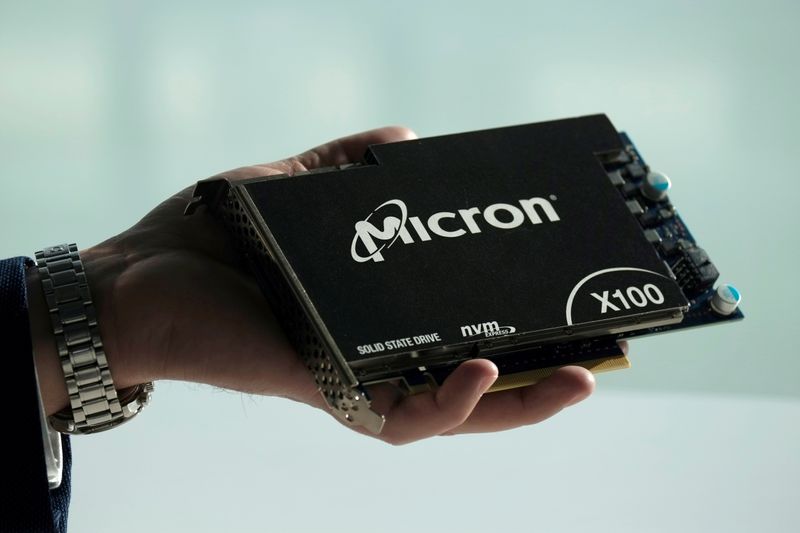Joby Aviation closes $591 million stock offering with full underwriter option
BOISE, Idaho - Micron Technology, Inc. (NASDAQ:MU), a prominent semiconductor manufacturer with a market capitalization of $126.7 billion, has introduced a 256-gigabit radiation-tolerant single-layer cell (SLC) NAND flash memory product designed for space applications, according to a company press release. InvestingPro analysis indicates the company is currently undervalued, with strong financial health metrics and robust growth potential.
The new memory solution is the first in a planned portfolio of space-qualified memory products that will include NAND, NOR and DRAM solutions. Micron claims it is the highest-density radiation-tolerant SLC NAND currently available in the industry. The company’s strong market position is reflected in its impressive 58.2% revenue growth over the last twelve months, according to InvestingPro data.
The product undergoes extensive testing aligned with NASA’s PEM-INST-001 Level 2 requirements, including temperature cycling, defect inspections and 590 hours of dynamic burn-in. It also receives radiation characterization testing for total ionizing dose and single event effects to verify reliability in space environments.
Micron’s memory technology is already being used in space missions, including NASA’s Earth Surface Mineral Dust Source Investigation (EMIT) aboard the International Space Station. The company’s NAND flash is utilized in Mercury Systems’ solid-state data recorders that capture scientific data for the mission.
"Modern space systems are capturing higher volumes of more complex data, demanding solutions that provide vastly more capacity in compact packages," said Vincent Pribble, principal product manager at Mercury Systems.
As the only U.S.-based memory manufacturer, Micron emphasizes its end-to-end supply chain control as a key advantage for aerospace and government sectors. The company is strengthening its domestic manufacturing capabilities, including modernizing its Manassas, Virginia facility.
The new radiation-tolerant memory product is currently available, with Micron planning to introduce additional space-qualified memory and storage solutions in the coming year. The company’s solid financial foundation, with a healthy current ratio of 2.75 and moderate debt levels, positions it well for continued innovation and growth. For deeper insights into Micron’s financial health and growth prospects, investors can access comprehensive analysis and additional ProTips through InvestingPro’s detailed research reports, available for over 1,400 US equities.
In other recent news, Micron Technology reported a significant increase in its fiscal third-quarter revenue, which grew nearly 50% quarter-over-quarter to over $1.5 billion, surpassing Bernstein’s expectations. This impressive performance has prompted several research firms to adjust their price targets and ratings for the company. Bernstein maintained its outperform rating with a $140 price target, while CFRA raised its price target from $117 to $155, citing Micron’s expanding high-bandwidth memory (HBM) segment as a key growth driver. Stifel also increased its price target to $145 from $130, maintaining a Buy rating due to the company’s strong third-quarter results and positive outlook for the fourth quarter.
Baird took an even more optimistic stance, raising its price target to $200 from $163, highlighting Micron’s accelerated gains in HBM market share. Additionally, Micron launched its new 2600 NVMe SSD, featuring the industry’s first 9th-generation QLC NAND technology, which promises performance on par with higher-tier TLC drives. This new storage solution is aimed at OEM clients and incorporates Micron’s Adaptive Write Technology, offering significantly faster write speeds compared to competing SSDs. These developments reflect Micron’s strategic focus on innovation and market share expansion in high-demand technology segments.
This article was generated with the support of AI and reviewed by an editor. For more information see our T&C.
